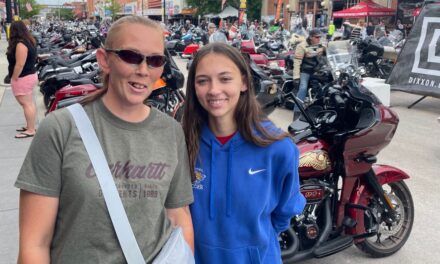” data-medium-file=”https://i0.wp.com/spokesman-recorder.com/wp-content/uploads/2023/08/MissingandMurdered.LakeishaLee.01.jpg?fit=336%2C224&ssl=1″ data-large-file=”https://i0.wp.com/spokesman-recorder.com/wp-content/uploads/2023/08/MissingandMurdered.LakeishaLee.01.jpg?fit=771%2C514&ssl=1″ decoding=”async” width=”771″ height=”514″ src=”https://i0.wp.com/spokesman-recorder.com/wp-content/uploads/2023/08/MissingandMurdered.LakeishaLee.01.jpg?resize=771%2C514&ssl=1″ alt class=”wp-image-1130613″ srcset=”https://i0.wp.com/spokesman-recorder.com/wp-content/uploads/2023/08/MissingandMurdered.LakeishaLee.01.jpg?resize=771%2C514&ssl=1 771w, https://i0.wp.com/spokesman-recorder.com/wp-content/uploads/2023/08/MissingandMurdered.LakeishaLee.01.jpg?resize=336%2C224&ssl=1 336w, https://i0.wp.com/spokesman-recorder.com/wp-content/uploads/2023/08/MissingandMurdered.LakeishaLee.01.jpg?resize=768%2C512&ssl=1 768w, https://i0.wp.com/spokesman-recorder.com/wp-content/uploads/2023/08/MissingandMurdered.LakeishaLee.01.jpg?resize=750%2C500&ssl=1 750w, https://i0.wp.com/spokesman-recorder.com/wp-content/uploads/2023/08/MissingandMurdered.LakeishaLee.01.jpg?resize=1140%2C760&ssl=1 1140w, https://i0.wp.com/spokesman-recorder.com/wp-content/uploads/2023/08/MissingandMurdered.LakeishaLee.01.jpg?w=1319&ssl=1 1319w” sizes=”(max-width: 771px) 100vw, 771px” data-recalc-dims=”1″>
Every Sunday, Lakeisha Lee would get together with her younger sister Brittany Clardy to watch their weekly marathon of “Law and Order: SVU.” They’d have their lunch and dinner planned, ready to binge their favorite show. The two of them wanted to be like Olivia Benson, one of the lead detectives and characters of the show.
Looking back on that time, Lee shared how fateful it all seemed following the murder of her sister Brittany. Lee was five years older and protective over her younger sister. They grew up in a middle-class family first residing in North Minneapolis before their move to St. Paul.
Lee had her own townhome, when Brittany was 18, and still living with their mother. At the time problems began to arise because of Brittany’s association with an older man.
“We were really worried about her and watching her transition out of her job. She worked at a recreation center with kids every day and she was such a loving and caring person for the kids there,” Lee said. “The person that she connected with, he started to take her away from a lot of that.”
One morning, in early 2013, Brittany left home, telling her mother she was heading to the corner store. She never returned home.
– ADVERTISEMENT –
Worried, Lee’s mother, Marquita Clardy, called her to tell her Brittany was missing. The two went to the police and pleaded their case about their sister. They told them that Brittany had been seeing an older man and that this wasn’t like her. The officers dismissed them, theorizing that she must have gone down to Chicago and run away with her boyfriend.
Frustrated, Lee and her mother had nowhere to turn. Days later, they received a letter from Brittany’s car company stating that her car was being held in an impound lot.
Soon after, Lee was shown photos by police officers of the inside of her sister’s car where her body was found.
From tragedy to advocacy
This harrowing experience propelled Lee onto a journey where she would work to help families like hers, who have experienced similar tragedies. In the years since her sister’s death, Lee has launched Brittany’s Place, a nonprofit organization that partnered with 180 Degrees, to offer young women residential and housing services along with chemical and mental health services.
Over the past two years, Lee has taken her family’s tragic experience to help shape what has now become the first Office for Missing and Murdered African American Women (MMAAW) in the country. She testified in front of lawmakers at the state Capitol and advocated for a central resource that would address the growing number of missing and murdered Black women in Minnesota.
– ADVERTISEMENT –
Rep. Ruth Richardson (DFL) sponsored a bill in the legislature for the creation of this office, which passed the Minnesota House earlier this year. It would allocate a $1.24 million annual budget to assist families with cases and award grants to community organizations engaged in combating human trafficking.
The work leading up to the creation of the office was led by a task force that came together in November 2021, mostly made up of law enforcement officers, attorneys, and lawmakers.
Lee had applied to be a part of the task force. But despite having advocated for the cause for years, found herself feeling a bit intimidated by the process.
“At first, it was very scary to do this work,” she said. “It’s just little old me. And I’m in the room with people who make laws and people who have the power to decide how we are going to talk about this narrative.”
Dr. Brittany Lewis, CEO and founder of Research in Action and a senior research associate at the Center for Urban and Regional Affairs, helped the task force gather the relevant data and information to guide the creation of an Office for Missing and Murdered Black Women.
– ADVERTISEMENT –
Dr. Lewis made it clear as she set out to do the necessary reporting for the task force that there was a need for Black women in this research, and that they should play an advisory role. Many of those appointed to the task force had professional experience around law enforcement and policymaking but lacked the lived experience of those who would be impacted by the office’s work.
“I think half the work was both the process of what it means to center Black women and girls’ voices, beyond a very tokenized kind of traditional community engagement approach,” she said. “It also required the folks that were appointed to the task force, some of whom are state legislators from the Bureau of Criminal Apprehension and other spaces to understand a different way to lead a process guided by Black women.”
Once the report was greenlit, Dr. Lewis and members of the task force set out to conduct interviews across the state of Minnesota, where they met with women in domestic violence centers. They were guided by several questions surrounding the nature of support that Black women were receiving in these facilities and if there was differential treatment that would affect their outcome and safety in these mostly White female-led spaces.
” data-medium-file=”https://i0.wp.com/spokesman-recorder.com/wp-content/uploads/2023/08/MissingandMurdered.DrBrittanyLewis.01.jpg?fit=336%2C224&ssl=1″ data-large-file=”https://i0.wp.com/spokesman-recorder.com/wp-content/uploads/2023/08/MissingandMurdered.DrBrittanyLewis.01.jpg?fit=771%2C514&ssl=1″ decoding=”async” loading=”lazy” width=”771″ height=”514″ src=”https://i0.wp.com/spokesman-recorder.com/wp-content/uploads/2023/08/MissingandMurdered.DrBrittanyLewis.01.jpg?resize=771%2C514&ssl=1″ alt class=”wp-image-1130611″ srcset=”https://i0.wp.com/spokesman-recorder.com/wp-content/uploads/2023/08/MissingandMurdered.DrBrittanyLewis.01.jpg?resize=771%2C514&ssl=1 771w, https://i0.wp.com/spokesman-recorder.com/wp-content/uploads/2023/08/MissingandMurdered.DrBrittanyLewis.01.jpg?resize=336%2C224&ssl=1 336w, https://i0.wp.com/spokesman-recorder.com/wp-content/uploads/2023/08/MissingandMurdered.DrBrittanyLewis.01.jpg?resize=768%2C512&ssl=1 768w, https://i0.wp.com/spokesman-recorder.com/wp-content/uploads/2023/08/MissingandMurdered.DrBrittanyLewis.01.jpg?resize=750%2C500&ssl=1 750w, https://i0.wp.com/spokesman-recorder.com/wp-content/uploads/2023/08/MissingandMurdered.DrBrittanyLewis.01.jpg?resize=1140%2C760&ssl=1 1140w, https://i0.wp.com/spokesman-recorder.com/wp-content/uploads/2023/08/MissingandMurdered.DrBrittanyLewis.01.jpg?w=1368&ssl=1 1368w” sizes=”(max-width: 771px) 100vw, 771px” data-recalc-dims=”1″>
“We were doing a focus group in St. Cloud and there was an elder Black woman who was in the domestic violence shelter amongst her younger peers. The younger Black female peers were coming to her for support and advice, because they couldn’t get it in the programming and the shelter,” Dr. Lewis stated.
In her reporting, Dr. Lewis discovered the debate taking place in the safe harbor community over the role that women with lived experience of physical and intimate violence have in being service providers to those seeking resources and refuge.
– ADVERTISEMENT –
Although some believe that there might be too much bias, Dr. Lewis relayed her findings that many of the women she interviewed said they’d liked being supported by others who can identify with their experiences.
According to the task force’s report, Black women make up 40 percent of domestic violence victims despite being 7 percent of the state population. This disproportionality in how domestic violence impacts Black women specifically underlined the work of the task force for its members.
Tiffany Roberson, a member of the task force’s advisory committee, stated that those who have experienced the failures of the system should be placed in roles where they can make a difference. Many victims of violence or their loved ones have experienced roadblocks in their search for help, especially with law enforcement. Roberson believes that oftentimes it’s too late. But having those with experience can make a difference in her view.
“I would love to see victims and survivors be sought out as important in making sure that the criminal system is not punishing them for something that was done to them,” she said. “You have to be literally near death to even get somebody’s attention, or you even have to be dead to get somebody’s attention.”
Since losing her sister, Lee has been working with families who have had similar experiences to hers and wants there to be a streamlined process for them to find their loved ones.
“I’ve talked to people that would post their missing loved ones only on Facebook,” she said. Many people have no clue where to turn when a tragedy such as this strikes according to Lee.
Her family was able to turn to the Gunderson Resource Center, where they created a flyer and got the word out about Brittany. She sees the opportunity to be on the task force as a chance to shine a light on the process victims and their families struggle through.
According to the report, unfulfilled needs such as food and shelter drive many young women into sex work, which then puts them at risk of violence.
“The one thing that stands out to me is the number of young people that are displaced,” Roberson said. “The least we can do is provide a safe space for them to lay their head at night.”
Looking forward, the money set aside for the office of MMAAW has been allocated, with the Office of Justice Programs actively searching to fill the role of director according to Dr. Lewis. She hopes to see the office provide resources to Black women in this state who are already doing this work and can provide culturally affirming resources and guidance to those in need.
“That’s one recommendation that we made, that this office has resources that they can give directly to folks and community leading the work, because they have little resources,” she said. “We talk a great deal about creating the new training and tracking system for health agencies, law enforcement agencies, and the courts because there’s a clear lack of cultural understanding and awareness. A lot of victim-blaming with Black women and girls and a lot of like ‘adultification’ of Black girls.”
With Minnesota leading the change, Dr. Lewis and Lakeisha Lee are preparing to take their report findings to Congress in September and continue to push for national change given their findings in Minnesota.
Support Black local news
Help amplify Black voices by donating to the MSR. Your contribution enables critical coverage of issues affecting the community and empowers authentic storytelling.




